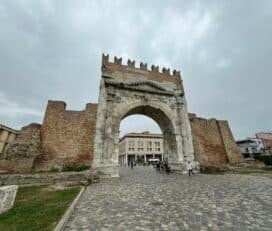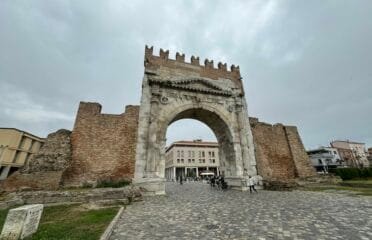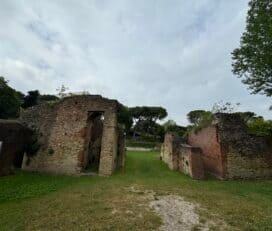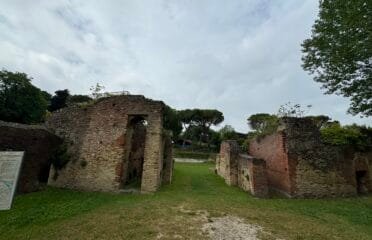Situated in the beautiful town of Rimini, Italy, the Ponte di Tiberio (also known as Tiberius Bridge) is an extraordinary example of Roman architectural ingenuity and resilience. Spanning over the Marecchia River, this historic bridge has served as a key gateway to Rimini’s town center for nearly two millennia.
History
Construction of the bridge started under Emperor Augustus in 14 AD and was completed under Emperor Tiberius in 21 AD. Since then, the bridge has weathered countless floods and conflicts, including World War II, and continues to stand firm. The five-arch bridge, crafted from Istrian stone, is a testament to Roman engineering and a symbol of Rimini’s rich history.
How to Get There
If you are already in Rimini, the bridge is easily accessible by foot from the town center, or you can take a quick ride on Bus 11. For those visiting from other cities, Rimini is well connected by trains and buses. From the Rimini train station, the bridge is approximately a 15-minute walk.
List of Attractions
- The Bridge Itself: Admire this architectural marvel. Its five symmetrical arches are a sight to behold, particularly during the evening when it’s beautifully lit.
- Roman Inscriptions: Notice the Latin inscriptions on the inner part of both parapets, stating the construction work was started under Augustus and completed under Tiberius.
- Borgo San Giuliano: This district, near the bridge, is famous for its colorful murals dedicated to the famous film director Federico Fellini.
Ticket Information
It’s free to explore Ponte di Tiberio. The bridge is open to pedestrians and cyclists all times of the year.
List of Tips for Visiting
- Visit During Sunset: The sight of the setting sun over the bridge is simply stunning. The evening lighting provides the perfect atmosphere for capturing memorable photographs.
- Take a Stroll: The area around the bridge, with its charming streets and characteristic houses, is perfect for a leisurely walk.
- Explore Nearby: Don’t miss the chance to stop by the nearby Borgo San Giuliano district.
- Culture Vulture: Look out for the Latin inscriptions on the bridge detailing its history for an enriched experience.
















